By Dan Weisz
This post is an assortment of nature photos taken during July.
We do have dragonflies in the desert. Since they begin their life as larva (or nymphs) in water, the adults can be found near almost any body of water in our area. Now, after the rains, I am seeing more dragonflies throughout the desert too. I saw some dragonflies at Sweetwater Wetlands earlier this summer. Most were Blue Dashers, one of the very common dragonflies of North America. Blue Dashers have a powdery blue abdomen and teal-green eyes and are up to two inches long.
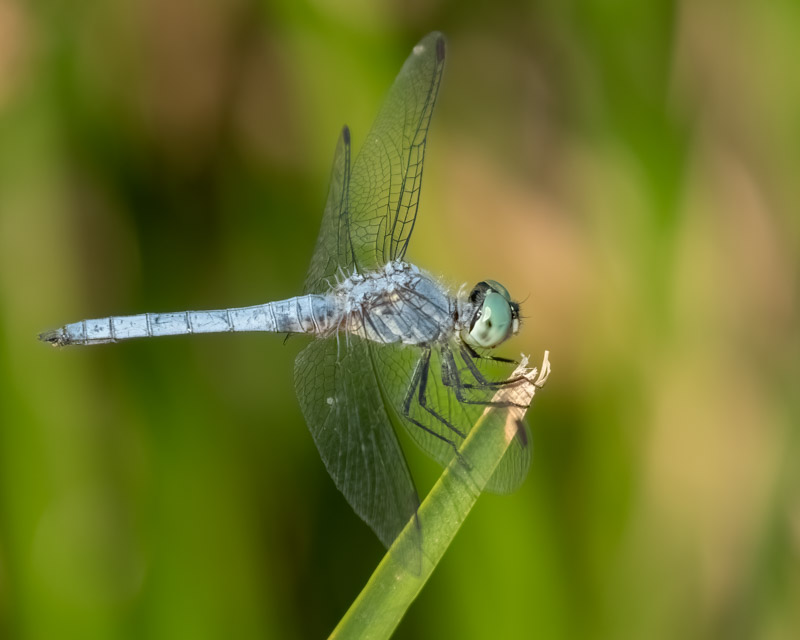
On a neighborhood walk, this large Kingsnake was out and about looking for food in a desert wash. Its body seems to be going in a number of directions. Kingsnakes are variable in their colors. A close-up did show faint yellow bands that most people think of when they think of our Kingsnakes.
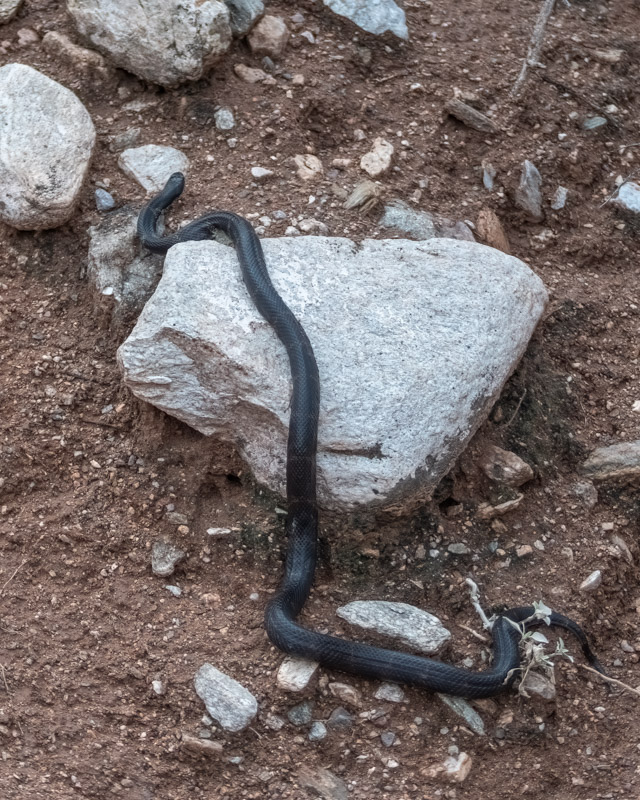
I have a Passion Vine plant in my yard specifically to attract Gulf Fritillary Butterflies. The Passion Vine is a “host plant” for this species of butterfly, meaning they lay their eggs on this plant. When the eggs hatch, the Gulf Fritillary caterpillar consume the plant is they grow.
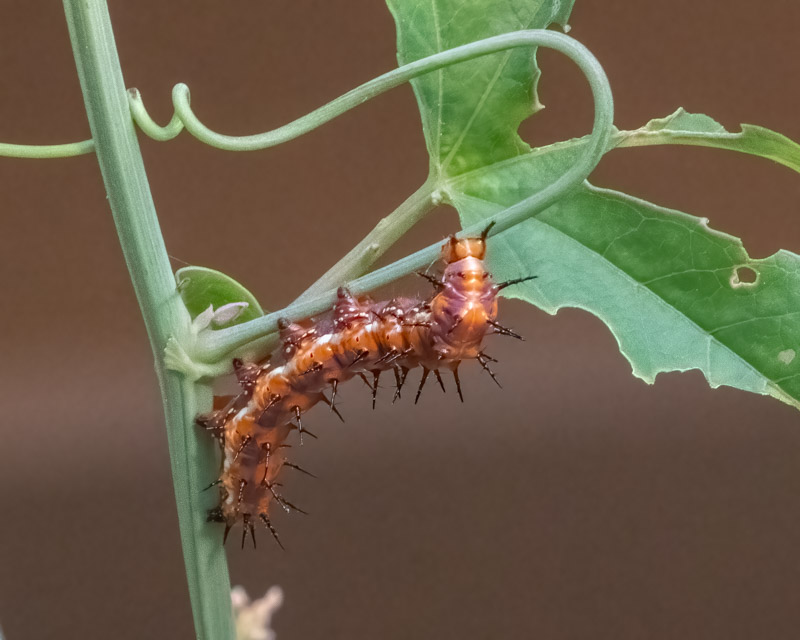
Here the caterpillar of a Gulf Fritillary is munching on the flower of the Passion Vine plant. They will eat any soft part of the vine including flowers. The Passion Vine flowers look like something from another world.
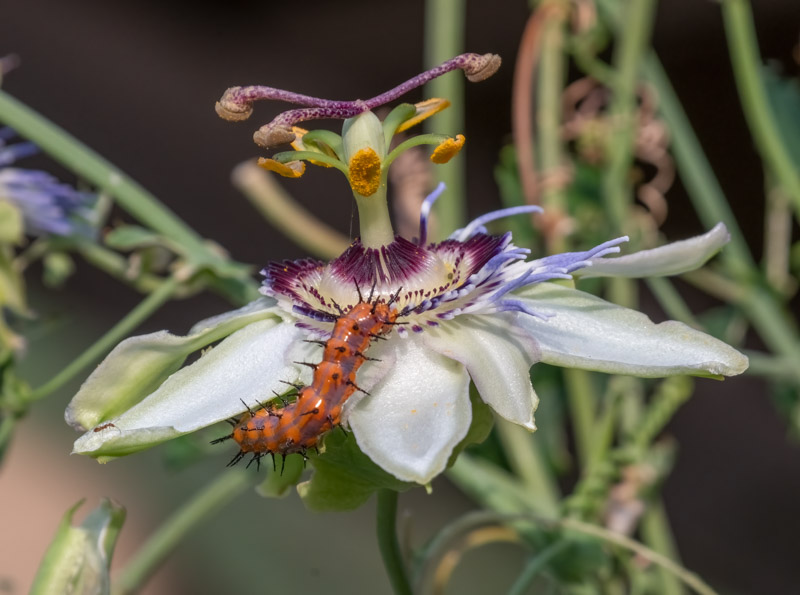
On my back porch, a Cottontail Rabbit enjoyed nibbling on some leaves of a sunflower plant. I like how it is pulling itself up by holding on to the pot. Now, with much more rain since this photo was taken, perhaps the rabbit will leave my leaves alone and be happy with all of the greenery sprouting in the desert.
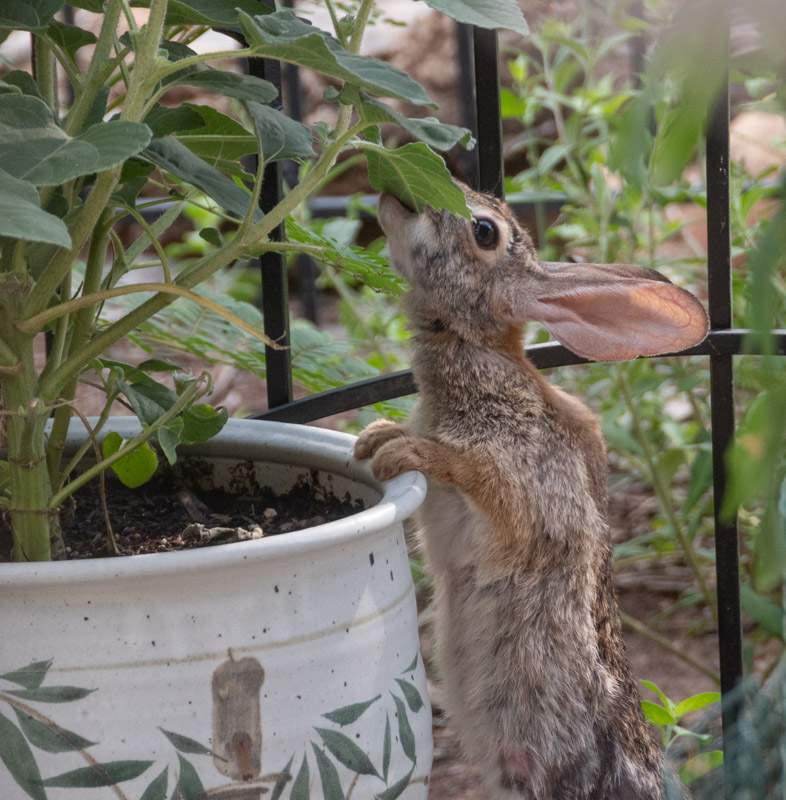
One afternoon I looked out the kitchen window as I was preparing a salad for dinner and saw a bobcat working on its own snack! When I opened the kitchen window to take photos, the bobcat looked up. Its dinner was a round-tailed ground squirrel.
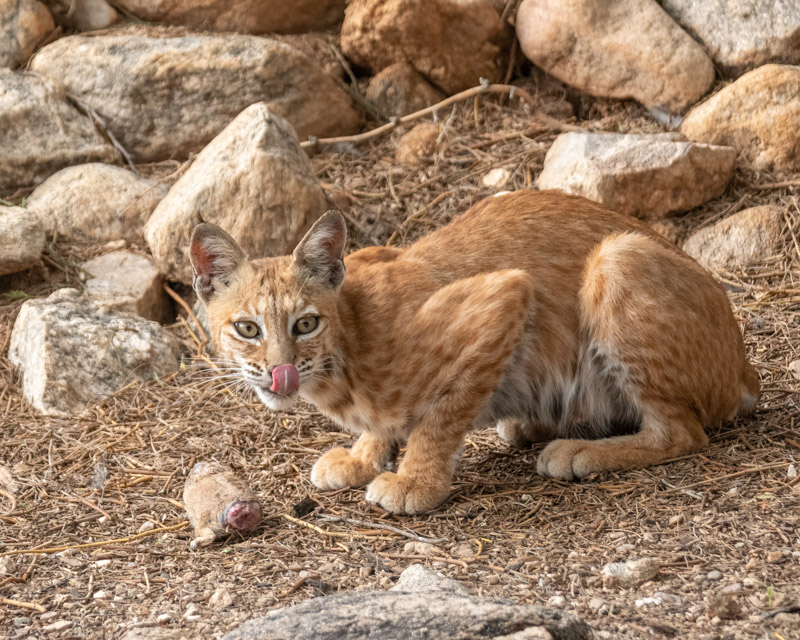
After finishing off the snack, the bobcat casually walked around the edge of my yard and then along the side of the house still licking its lips.
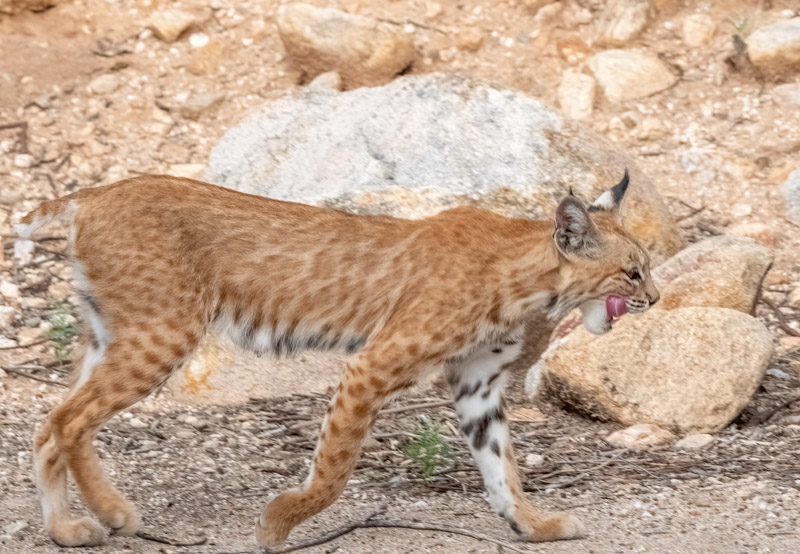
One evening in between the rainy days, I visited Sabino Canyon with friends. Near the visitor center, we saw a very active Roadrunner hunting for food among the debris and rain runoff around the visitor center. Here it is walking through a field of saguaro fruit.
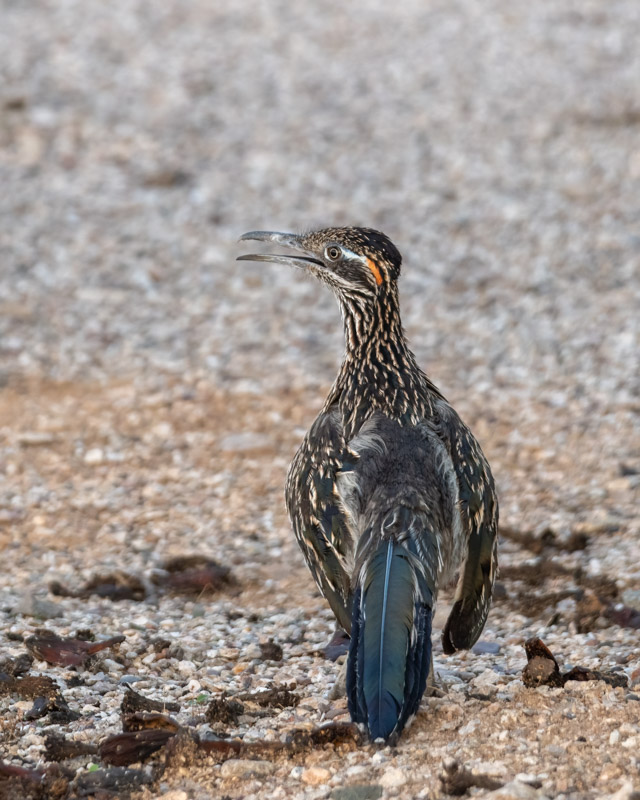
We saw a Desert Spiny Lizard on a mesquite tree. Desert Spinies are one of the larger and more conspicuous lizards in the Tucson area. They are named for the overlapping, spine-tipped scales on their bodies and they have a recognizable black ’necklace’. Adult male Desert Spiny Lizards have a purple patch on their back like this one does. The lizard was casually holding on to the tree trunk while upside down. That’s an easy thing to do if you are a lizard.
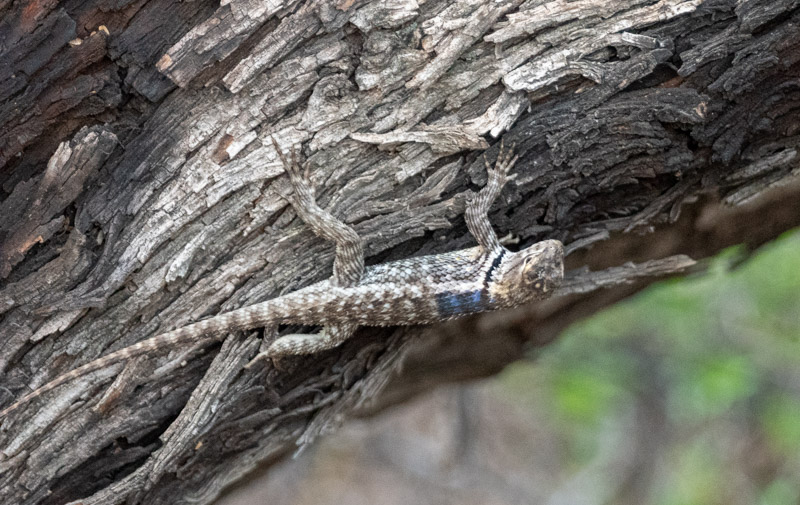
We saw a Tarantula Hawk dragging its prey across the ground. Tarantula Hawks, a type of Pepsis Wasp, are named after the Tarantulas they hunt. They do not eat the large spiders. The female Tarantula Hawk stings the Tarantula, paralyzing it. She then drags it back to a burrow, places one egg on the living spider, and then buries the spider with the egg attached to it. When the egg hatches, the larva feeds on the living Tarantula, first feeding on nonessential organs so the Tarantula remains alive.
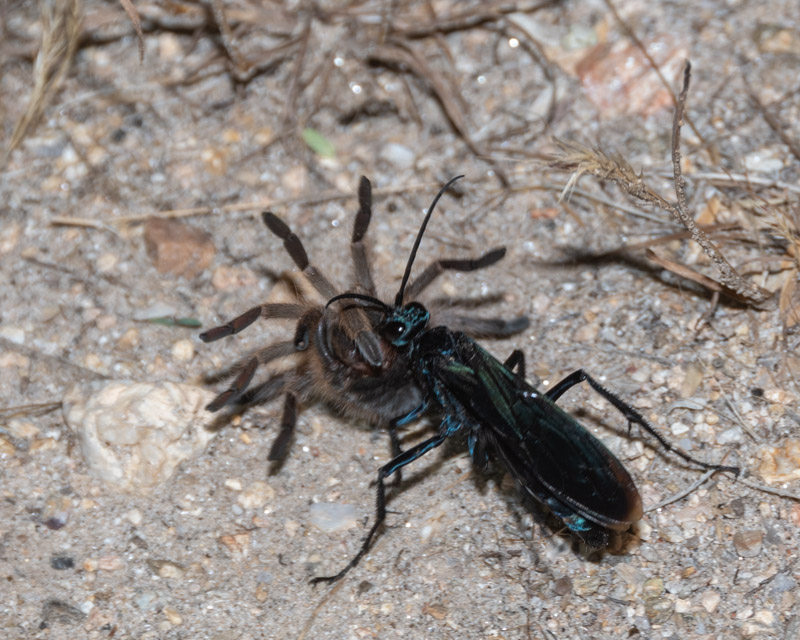
At one point the Tarantula Hawk left the spider on the ground and flew around the area. Perhaps she was checking to see where the burrow was. Within a minute or two she returned to the paralyzed spider and quickly began dragging it through the desert until they disappeared beyond our sight. For more on this interesting insect, see https://www.desertmuseum.org/kids/oz/long-fact-sheets/Pepsis%20Wasp.php
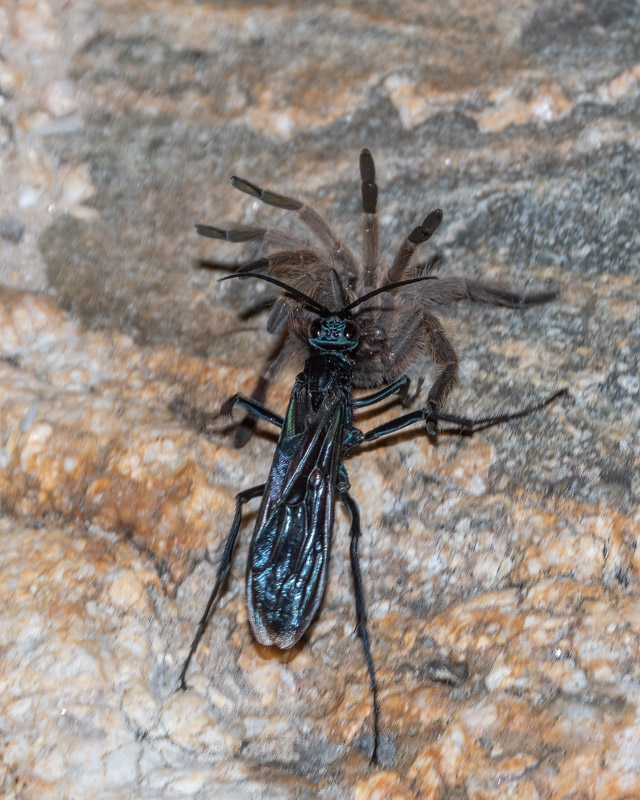
Near the dam in Sabino, I saw a two-inch long juvenile Banded Gecko, a nocturnal lizard. Its coloring will change as it gets older. By the looks of the missing tip of its tail, this gecko has already escaped at least one predator. For more on Banded Geckos, see https://www.desertusa.com/reptiles/western-banded-gecko.html
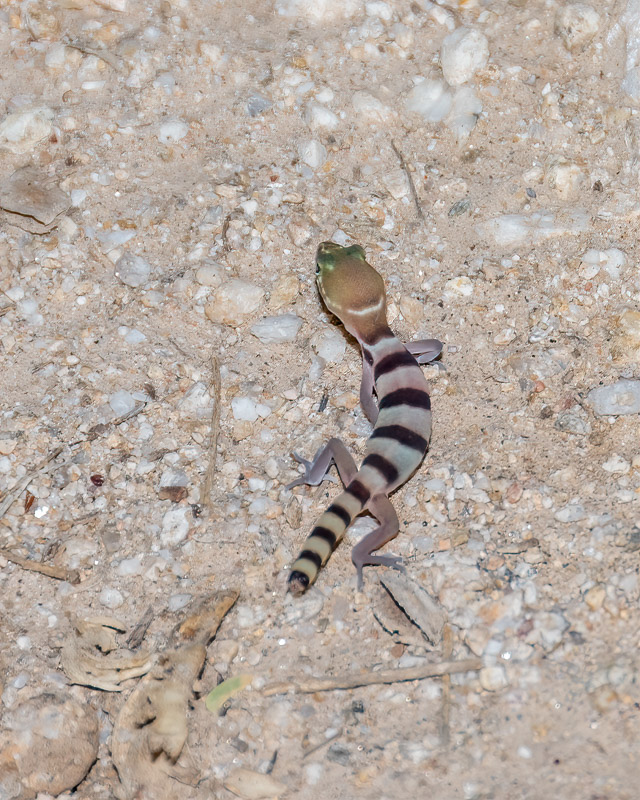
As we headed back to the visitor’s center, we ran across another large Tarantula. I like this photo because it shows how the summer rains bring life to the desert. There are countless small plants growing as a result of the new moisture. And the Tarantulas are out and about because of the rain. The rain increases the amount of prey insects for them and mature Tarantulas begin to look for mates at this time of year. This photo shows the bounty of our summer rains!
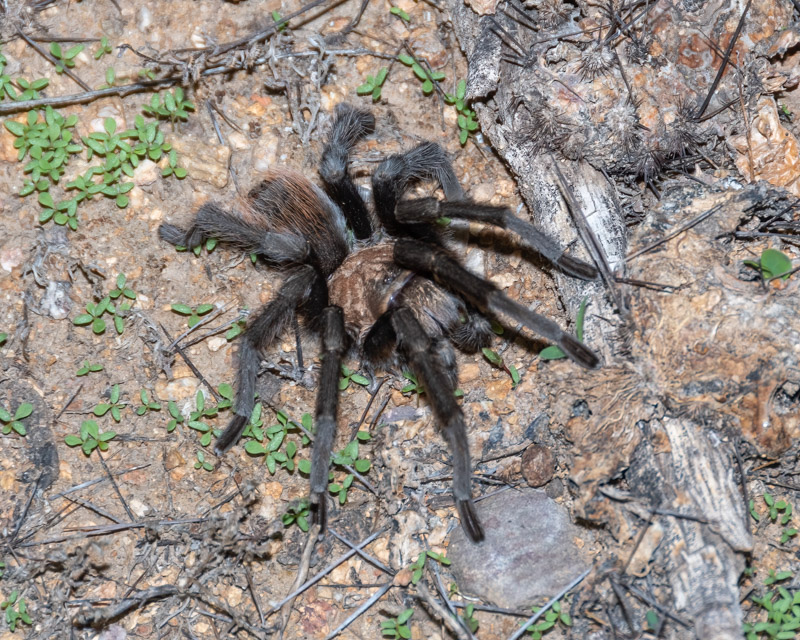
We sure live in an interesting part of the world.
